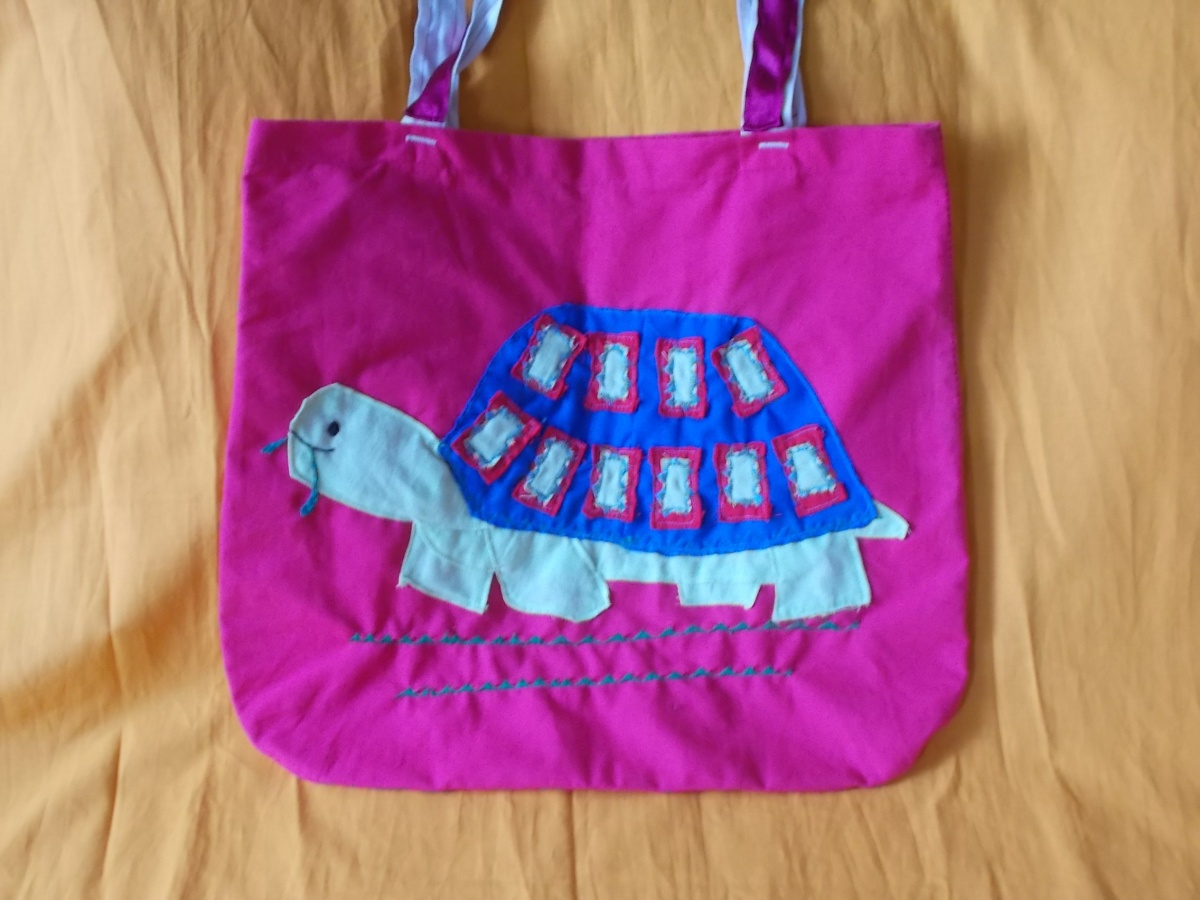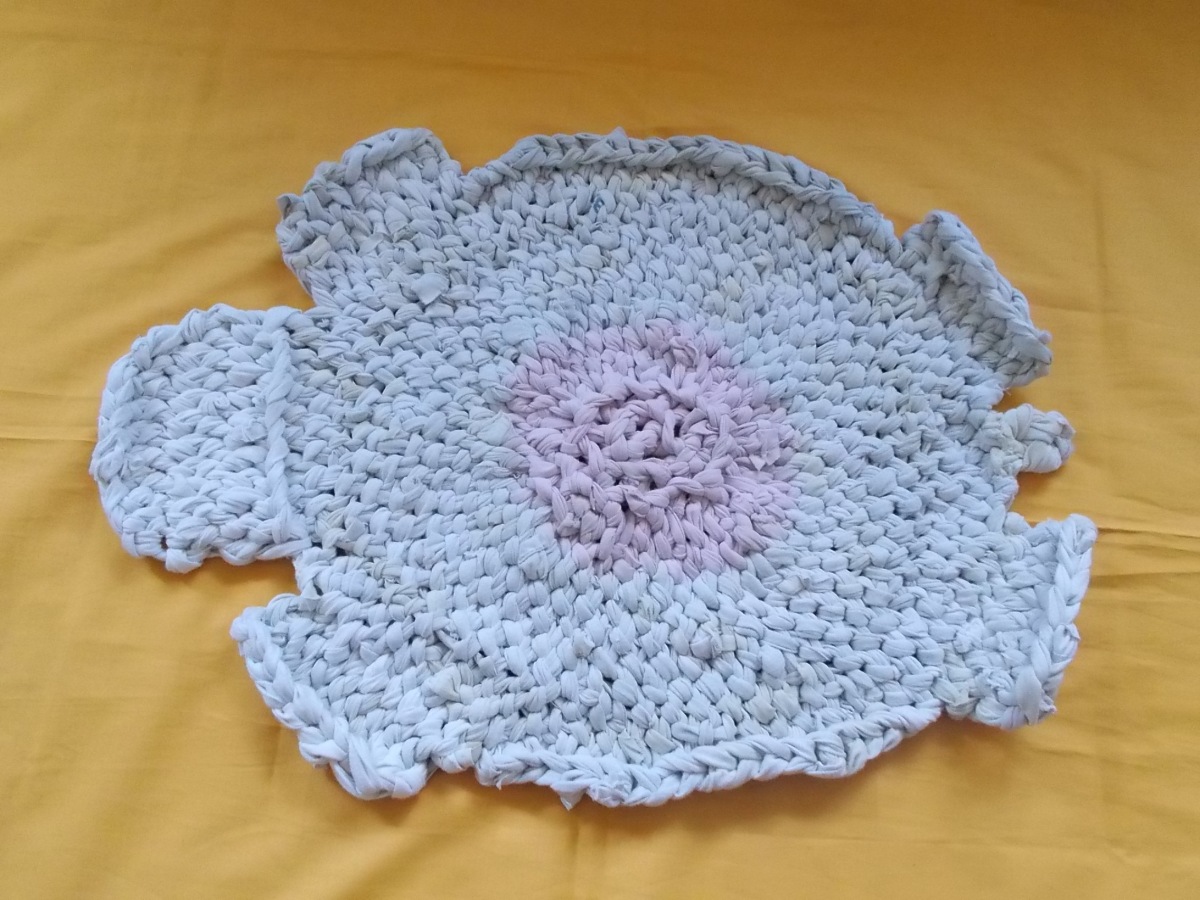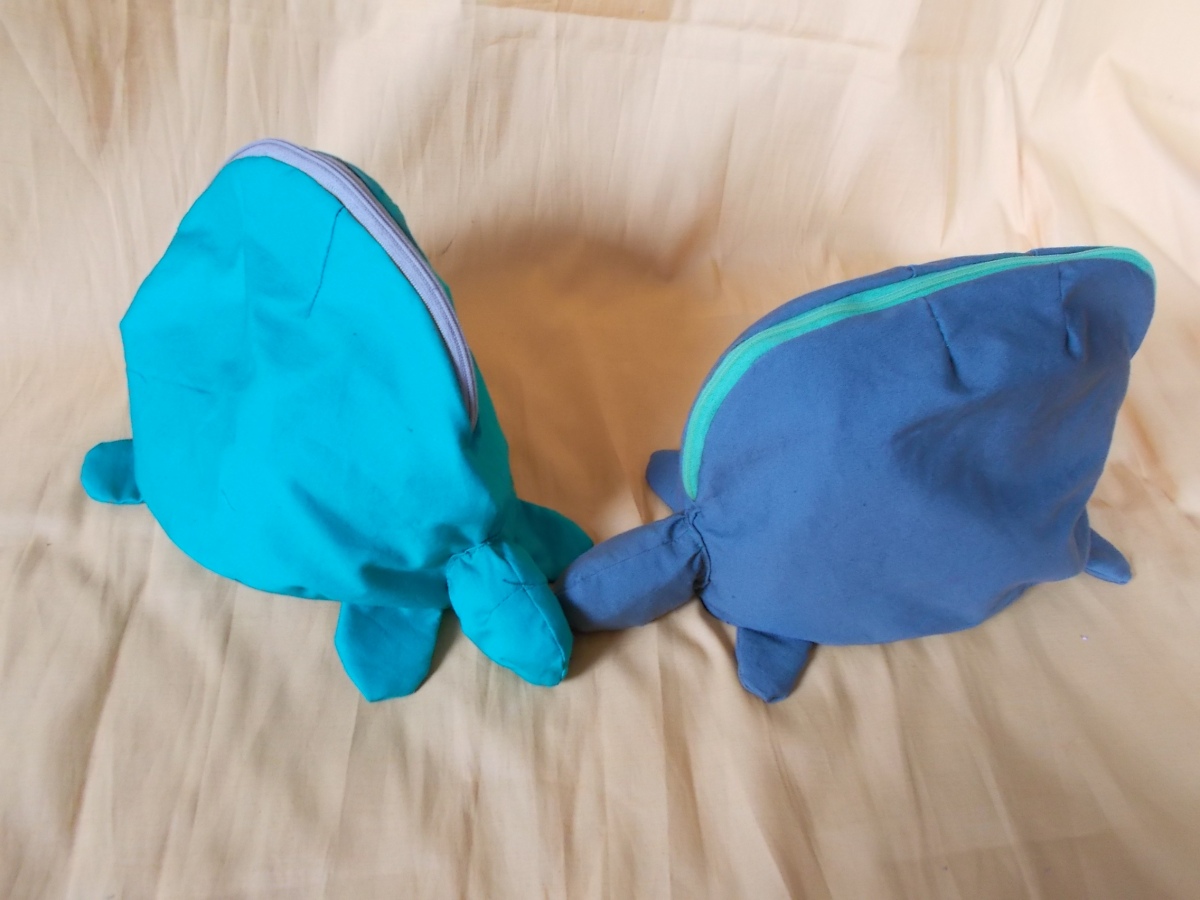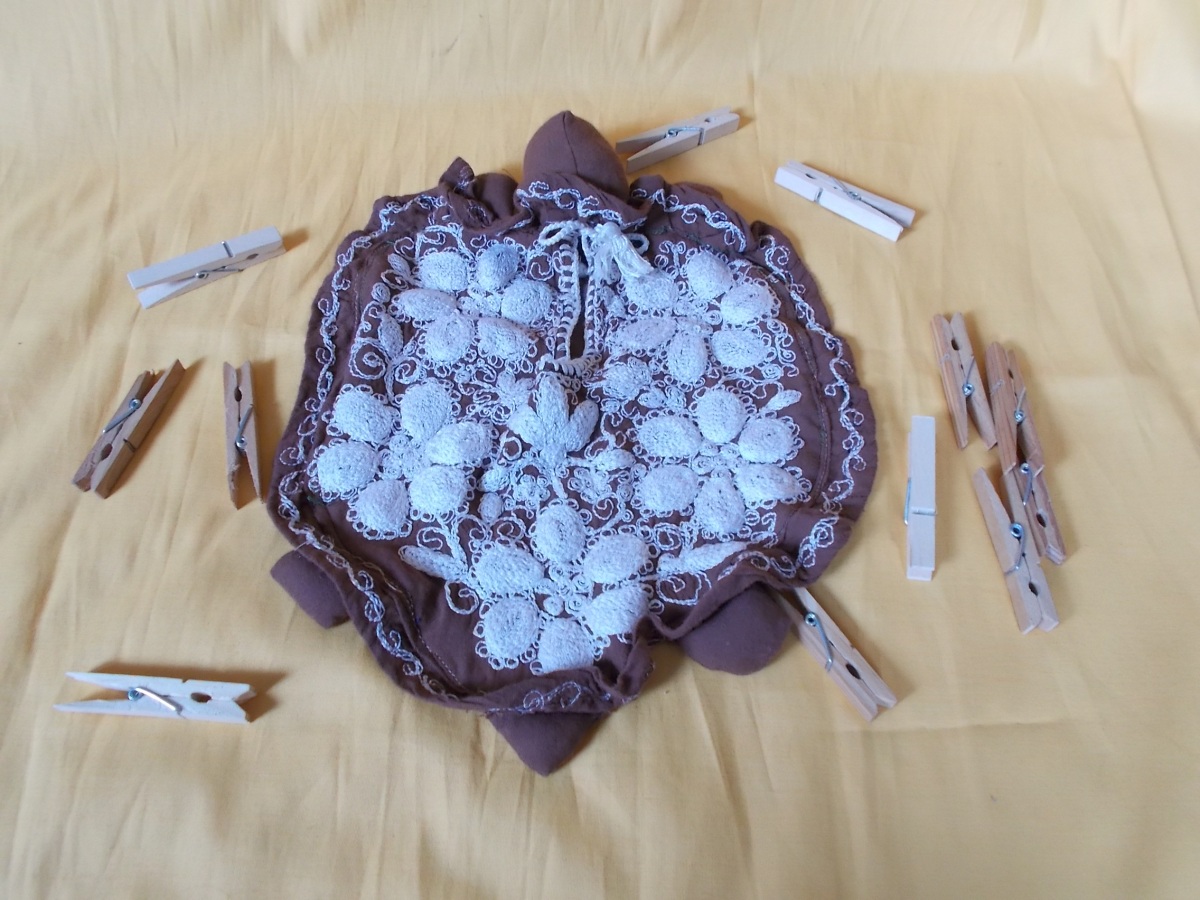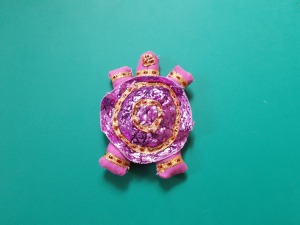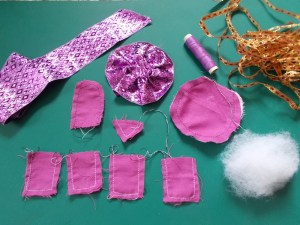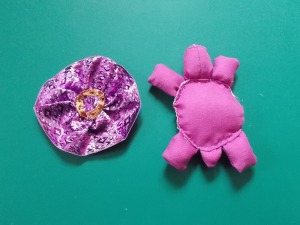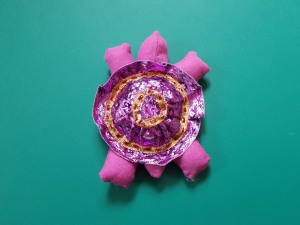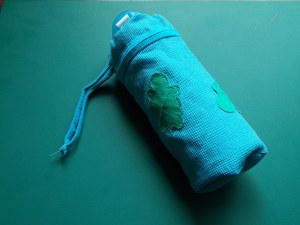
Today’s blog post is about another upcycling project, namely about how to make a cover or bag for an aluminium water bottle from scraps of fabric. 🙂
You will need:
scraps of fabric for the bottle cover
tiny scraps of fabric for a design of your choice
a cord or ribbon
sewing machine (optional)
 1. Measure your water bottle and choose a piece of fabric in the length and width of your bottle, adding about 1 cm/0.3 inch in all directions for the seam. Ours was made from the sleeve of an old shirt.
1. Measure your water bottle and choose a piece of fabric in the length and width of your bottle, adding about 1 cm/0.3 inch in all directions for the seam. Ours was made from the sleeve of an old shirt.
 2. As the sleeve had an ugly white seam which we didn’t want to have on our bottle cover but which we could not remove, we covered it with a strip of fabric.
2. As the sleeve had an ugly white seam which we didn’t want to have on our bottle cover but which we could not remove, we covered it with a strip of fabric.
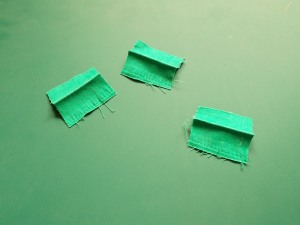 3. Next we chose some really tiny scraps of fabric for our design. As you can see in the photo, we used a length of seam from an old garment which had been shortened which we unstitched to reclaim the full length of the strip of fabric. We at EcoTurtleUpcycling don’t throw away any scraps of fabric, not even tiny scraps and remains of fabric, but collect them in a large bag because these tiny scraps come in really handy for all kinds of decorations and applied designs. When we just need a really small patch of fabric for a design, it would be a waste to cut out a strip of a larger piece of fabric which we could use for a project of its own. In this way, nothing is wasted, not even small scraps of fabric 🙂 .
3. Next we chose some really tiny scraps of fabric for our design. As you can see in the photo, we used a length of seam from an old garment which had been shortened which we unstitched to reclaim the full length of the strip of fabric. We at EcoTurtleUpcycling don’t throw away any scraps of fabric, not even tiny scraps and remains of fabric, but collect them in a large bag because these tiny scraps come in really handy for all kinds of decorations and applied designs. When we just need a really small patch of fabric for a design, it would be a waste to cut out a strip of a larger piece of fabric which we could use for a project of its own. In this way, nothing is wasted, not even small scraps of fabric 🙂 .
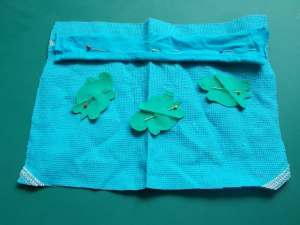 4. Cut out and sew your design onto the fabric.
4. Cut out and sew your design onto the fabric.
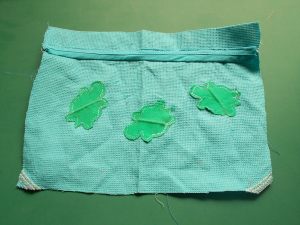 5. The finished design.
5. The finished design.
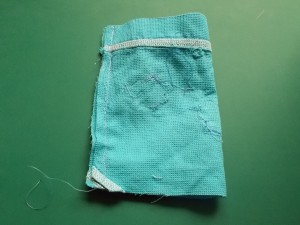 6. Sew the edge of your bottle cover, leaving the bottom open.
6. Sew the edge of your bottle cover, leaving the bottom open.
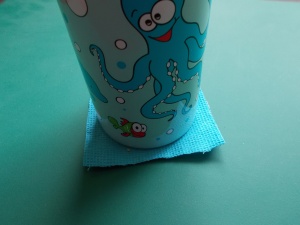
7. Choose a piece of fabric in the size of the bottom of your bottle, taking care to add about 1 cm/ 0.3 inch around the circle for the seam. Cut out a circle and sew it to the body of your bottle cover (inside out!).
8. Finally choose a ribbon or cord for your bottle and sew a strip of fabric against the inside of the top of your cover, then pull the ribbon through. Alternatively, make some holes into the fabric along the top of the cover to pull through your cord. Instead of a ribbon or cord, we used the strap of an old ladies’ top as a cord for the bottle cover.
9. Insert your bottle! 🙂
